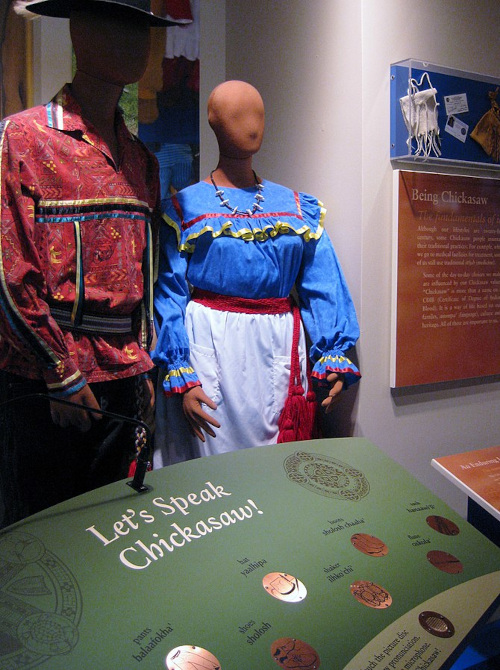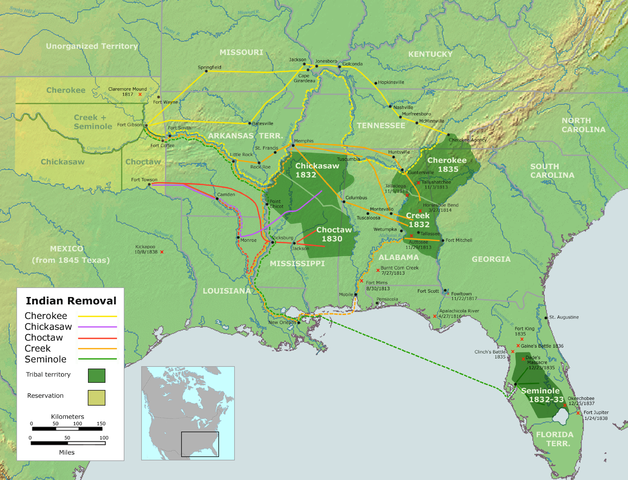 Chickasaw dress and language exhibit at Chickasaw Cultural Center in Sulphur, Oklahoma; image courtesy of Sheila Scarborough and Wikimedia Commons
Chickasaw dress and language exhibit at Chickasaw Cultural Center in Sulphur, Oklahoma; image courtesy of Sheila Scarborough and Wikimedia CommonsDespite gross injustices committed against the Chickasaws, they displayed astonishing loyalty to the United States. During the war of 1812 they generally disregarded Tecumseh's appeal to join in an Indian uprising against the United States. Chickasaw braves even served in General Andrew Jackson's army against the British, often as scouts and messengers.
By 1818, land cession treaties had stripped the Chickasaws of all land in the loess zone. They retained only small parcels in northeastern Mississippi and northwestern Alabama. The buffalo and bear were gone and not enough deer remained for them to depend on.

The above screenshot of a National Archives handwritten document describes the Chickasaws' condition in 1830. "... They have large herds of cattle, swine, sheep and goats, and poultry of every description... Cotton, beef and pork are the principle articles for exportation," the document reads.
From the proceeds of farm produce and livestock, the Chickasaws purchased "necessaries and luxuries of life" as well as slaves, sugar, coffee and "dry goods to render them comfortable and ornament their persons. The time has come when they no longer depend upon the rifle for support, but it is used more for their recreation and amusement than for the means of sustenance. Every family cultivates the earth more or less as his thirst for gain, or his imaginary or real wants increase... For the last eight years, the practice of the men requiring the women to perform all the labor in the field is much changed -- the men now (with few exceptions) cultivate the earth themselves, while the female part of the family is engaged in their household affairs. They spin, weave and make their own clothing."
In short, the Chickasaw were model US citizens. Nonetheless, pressure on the Chickasaw and other indigenous nations only increased with President Andrew Jackson's 1830 Indian Removal Act, which forcibly removed most members of the major tribes of the Southeastern US to relatively arid, unproductive Indian Territory. These forced removals -- which today would be called ethnic cleansings -- now are known as the Trail of Tears.

There's excellent material available at the Chickasaw History Page.